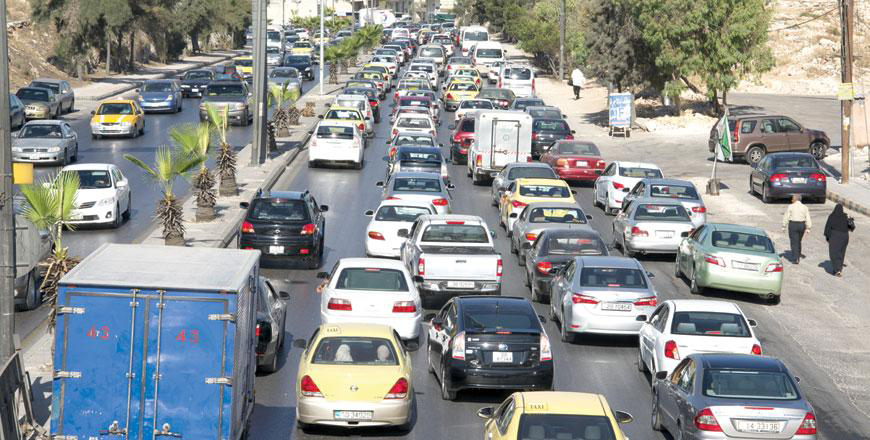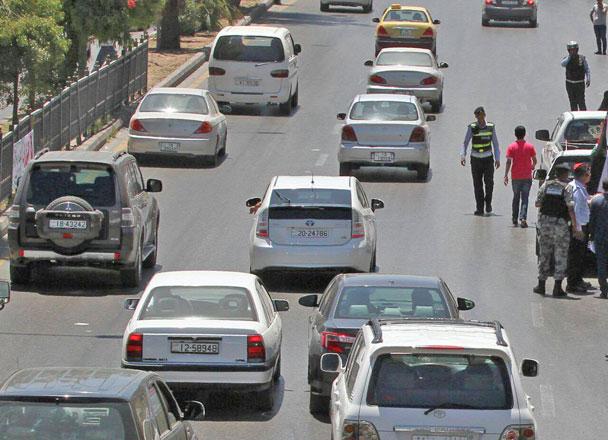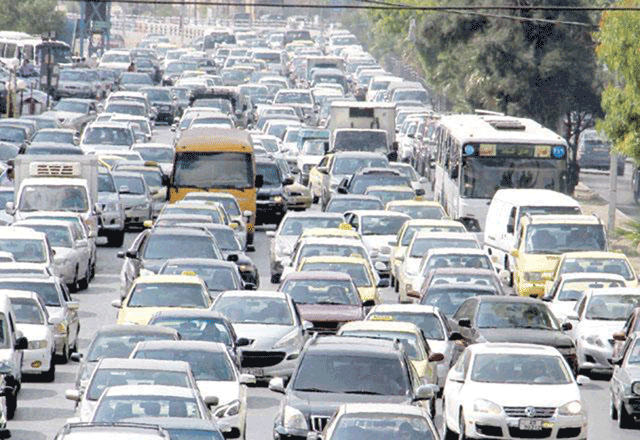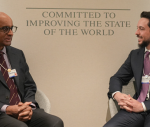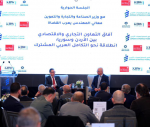You are here
‘Serious, comprehensive’ traffic measures necessary in Amman, say experts
By Rana Husseini - Jan 23,2023 - Last updated at Jan 23,2023
AMMAN — Traffic experts recommend that the government adopt “serious and comprehensive” plans to beat traffic congestion that afflicts the capital.
In mid-January, Amman Mayor Yousef Shawarbeh announced the Greater Amman Municipality’s (GAM) strategic plan for 2022-2026, which included several measures to be adopted in Amman.
One of the main projects, according to Shawarbeh, is the launch of the public transport strategy for the next 10 years (2022-2032), which includes the implementation of Phase 2 of the Bus Rapid Transit (BRT) project and the expansion of public transport services.
The GAM plan will increase the number Amman buses in Amman to 286 by purchasing 136 new buses and 15 electric buses.
It also entails implementing traffic improvements and solutions for various intersections within the first and second phases of the BRT project, which has a total length of 50 kilometres at a cost of JD281 million, the mayor stressed.
Former Minister of Transport and former PSD traffic director at Jamil Ali Salim Mujahed said the GAM’s part in the solution is to increase the number of operating buses, but “it is not enough to solve the congestion problem”.
“The increase in the number of buses is good, but not enough to end this problem since it is still far from international numbers,” Mujahed told The Jordan Times.
The former minister said that motorists still depend on their vehicles.
In addition, he maintained, “BRT services are weak since it lacks certain services such as a timetable, fixed stops and expensive fairs”.
“If we really want to improve the public transport system, we have to work on other issues, most importantly, revamping the public transport network to reach all areas,” according to Mujahed.
One area of focus is ensuring that users will not be forced to use more than one form of transport to reach their final destination Mujahed said.
Other measures that should be adopted include increasing the number of buses and routes while designating fairs based on distances, Mujahed explained.
GAM and the Public Security Directorate (PSD) also have a responsibility to reprogramme traffic lights based on the traffic load and increase surveillance on motorists blocking the roads or double parking, Mujahed added.
The PSD recently announced its plan to deal with the Kingdom's most congested roads, including those in the capital.
Director of Traffic Department Brig. Firas Al Duwairi said that Traffic Department studies have identified the 70 busiest spots along the Kingdom's most congested roads.
Duwairi stated that the PSD will work in cooperation with key partners such as the ministries of local administration, public works, housing and transport, GAM and the Land Transport Regulatory Authority.
The traffic department's role is restricted to the organisation and facilitation of traffic reduction and the prevention of traffic violations, in addition to coordinating with the relevant authorities to find engineering and technical solutions, he noted.
There are 1, 900,000 vehicles running on Amman’s roads, he said, adding some 80,000 vehicles enter the Kingdom every year. The increased density of vehicles is among the characteristics of an active capital city, including Amman, he said.
President of the Jordanian Society for the Prevention of Road Accidents Wafai Mseis told The Jordan Times that Amman is still within the normal range in traffic congestion but the number of drivers and vehicles will continue to increase.
He also offered additional suggestions to ease the traffic congestion in Amman.
“We need to encourage carpooling and to designate certain taxi stops since there are around 50,000 taxis and other similar application companies that are roaming the streets and causing part of the congestion,” Mseis said.
The traffic expert also suggested resorting to one-way streets as a form of easing the heavy traffic load on certain streets.
“There should be a broad solution with comprehensive studies by specialists who have the necessary experience to offer suggestions, and the government should engage more with these experts to come up with the best and most practical solutions,” Mseis stressed.
Related Articles
AMMAN — Traffic experts on Tuesday called for the relevant entities to unite efforts to draft long-term strategies to curb road accide
AMMAN – City planners are optimistic that in 2018 motorists in Amman will spend less time sitting in traffic as a major public transport pro
AMMAN — The Public Security Directorate (PSD) on Saturday launched the second phase of the “Together, We Arrive Safely” campaign to raise pu


